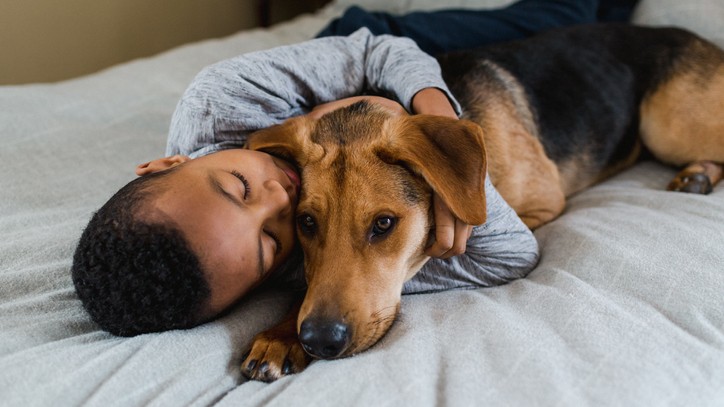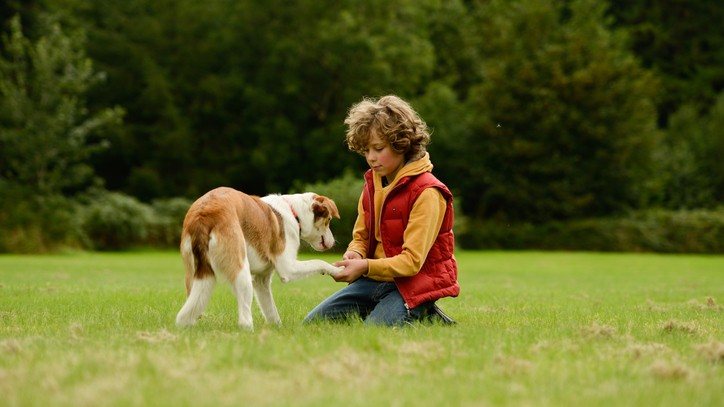What’s the best dog for kids and families? Our vet advises
Find the best dog for kids and families with these expert puppy-picking tips

Choosing the best dog for kids should take into account not only the dog’s temperament, but also your child’s age, maturity, and lifestyle. There’s nothing quite so wholesome as a child and a puppy exploring the world as they grow up together. Children who grow up with dogs also experience many health and psychological benefits, including increased physical activity and improved self-esteem.
But before you bring a new dog into your family, it’s important to find the right match for your kids. Finding a good fit for your family may take some time, but these tips will help you make the best choice.
Are your kids ready for a dog?
Your kids have been begging for a puppy for months – but are they really ready for the responsibility of a dog? And are you prepared to shoulder the burden of care if they aren’t? Taking some time to evaluate and discuss the responsibilities that will come with your new dog can save you a lot of frustration later. Taking a look at our puppy checklist will help with the preparation.
Be sure to discuss who will be in charge of food and water, walks, play time, and exercise for your new dog. This is also a good time to decide how your new dog will be trained, so you can make sure the whole family is consistent with the training plan. Involving your kids in this process is a great way to encourage responsibility, but remember that kids of any age should always be supervised when interacting with dogs, and especially with a dog that is new to your household.
In addition to these care responsibilities, it is also very important to make sure that your kids know how to interact with the dog appropriately. Young children, in particular, can be very scary for a dog. Loud noises, sudden movements, and unpredictable behavior may seem threatening to your new dog, and could put your kids at risk of a dog bite. Before bringing a new dog into your home, take some time to teach your kids about safe behavior around dogs.
You and your family should also familiarize yourselves with the basics of dog body language, including the Canine Ladder of Aggression, so you can quickly spot a problem and stop the interaction before it escalates.
Choosing the best dog for kids
When choosing a new dog that will fit in with your family, it is important to consider your expectations and lifestyle. Many new pet owners get caught up in picking a dog based on breed or appearance, without pausing to consider whether they’ll be able to meet that particular dog’s needs. For example, a high-energy dog breed like the Border Collie may not be the best choice for a busy family with little time for exercise and training. Similarly, a giant breed like the Great Dane or the Newfoundland may not fit in well with a family sharing a small apartment space. Before getting your heart set on a particular breed, do your research to find out which dog breeds and personality types will be the best fit for your family.
Don’t forget that breed alone cannot predict a dog’s temperament. Even breeds that are typically touted as being “family friendly” can be fearful or aggressive around children. Factors such as genetics, socialization, training, and past experiences can all play a role in how a dog responds to different situations, including interactions with children.
Before bringing a new dog home, take some time to have each member of the family meet the dog individually in a quiet and neutral environment. Look for a dog that is friendly and outgoing, voluntarily approaches your kids, and initiates interactions. Any sign of anxiety around kids – such as lip-licking, looking away, cowering, raising a paw, etc. – is an indicator that this particular dog may not be the best pick for your family. If purchasing your dog from a breeder, be sure to ask if you can also meet the dog’s parents, which can give you a better idea of what to expect when your puppy is fully grown.

Socialization and training a dog with kids
No matter which dog you choose, providing proper training and socialization for your new companion is a must. Any dog can become frightened or aggressive towards children if not properly socialized. The critical period of socialization for puppies occurs from about three to 14 weeks of age. During this time, puppies are most receptive to learning from new experiences. Any negative experiences during this time may lead the puppy to develop fears later in life. Likewise, a lack of socialization during this time can also lead the puppy to be more anxious and fearful of new situations in the future.
If you’re adopting a new puppy, it is essential to spend these critical weeks introducing your puppy to a variety of people of different ages and appearances, and in a variety of settings. This should include introducing your puppy to children of different ages under direct supervision. These interactions should be kept brief and upbeat, and you should never force your puppy to interact if he or she seems nervous or stressed.
If your new dog is an adult, you’ve unfortunately already missed the critical period for socialization. But that doesn’t mean that your new family member has finished learning! Whether you decide to work with a dog trainer, attend obedience classes, or simply train at home, using positive reinforcement is a great way to help your dog develop confidence with new people and situations. Positive reinforcement focuses on reinforcing good behavior – such as calm, relaxed body language around kids – using rewards such as the best dog treats, praise, and petting. Your dog will not only learn how to behave appropriately, but will also look forward to these interactions because they’ll be getting some great rewards!
It’s all about how you raise them
No single breed or type of dog is the best dog for kids. Any dog can become fearful or aggressive around kids, but choosing the right fit for your family, and providing proper socialization and training, can reduce this risk. Your kids should also learn how to interact with dogs appropriately. With patience and positive reinforcement, your dog can become your child’s new best friend.
PetsRadar Newsletter
Get the best advice, tips and top tech for your beloved Pets
Dr. Elizabeth Racine is a small animal general practice vet covering all things pet health and wellness. Her special interests include veterinary behavior, nutrition, and internal medicine.
As a freelance writer, Dr. Racine has written content for major companies in the industry such as the American Kennel Club, Merck Animal Health, Bayer PetBasics, Elanco, and CareCredit. In her free time, Dr. Racine enjoys playing trampoline dodgeball, hiking with her beagle Dasher, and spending time with her three mischievous cats.

